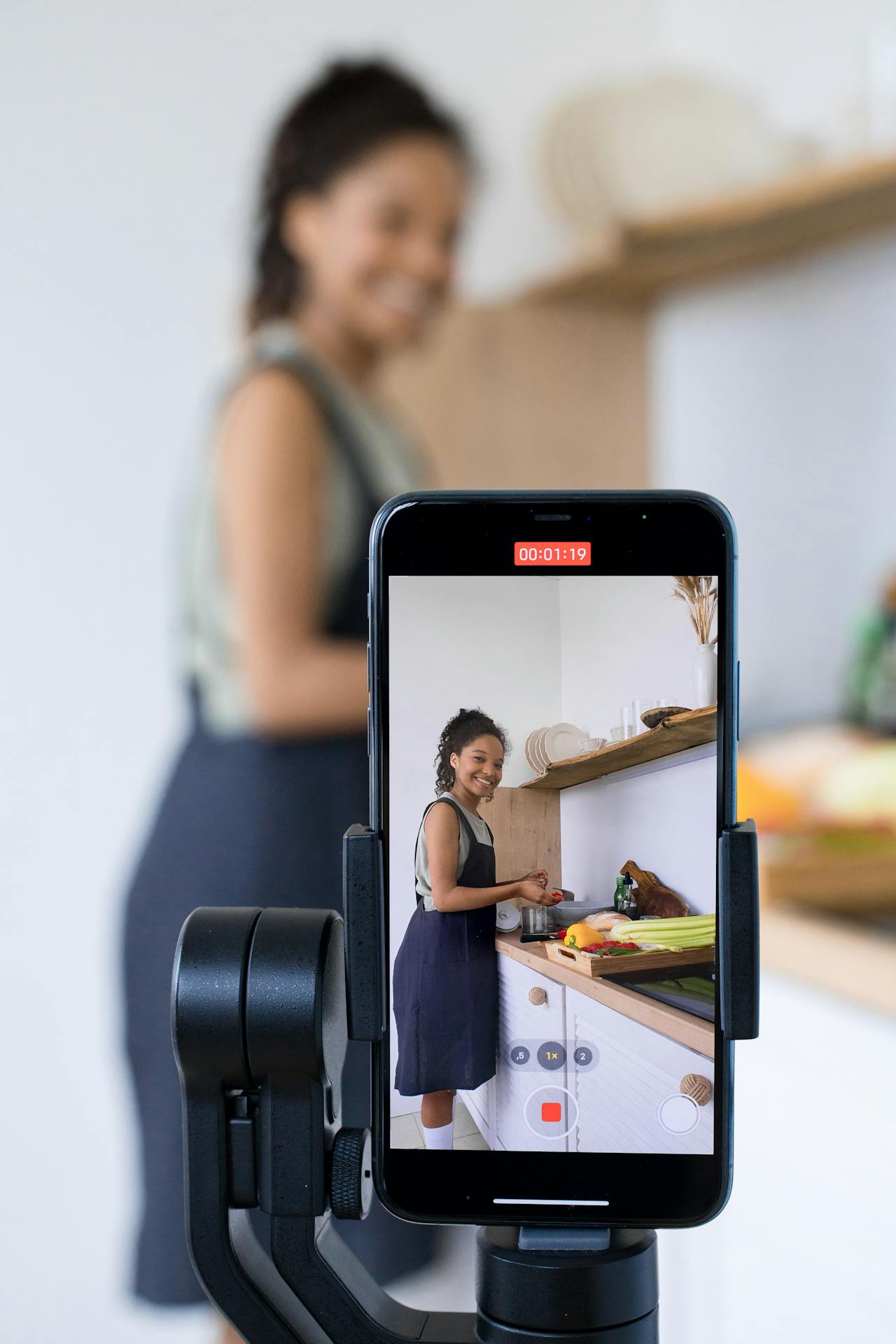Owning, managing, and growing a small business is challenging. You have to fight several wars simultaneously. At one extreme, you must maintain a healthy cash flow and ensure you have enough budget to keep moving. At the other end, you compete with big brands in your niche that make marketing not just difficult, but quite expensive for you (e.g., high PPC bids).
Research shows that one in five businesses in the US fail in the first year and 50% of businesses fail in the first 5 years. The number one reason why these businesses fail is because they run out of capital.
Spending smartly on marketing is one of the many ways small businesses can maintain a healthy cash flow and avoid failing.
I have listed the 10 low-cost and highly effective marketing techniques for small businesses that most of your giant competitors aren’t investing in. Strategically distributing your marketing resources across multiple low-cost techniques can help you gain a competitive advantage.
Let’s explore the marketing techniques:
1. Leverage the Right Social Channel
As of April 2024, 62.6% of the world’s total population has access to social media which makes it a must-have marketing channel. You can grow your brand exponentially via social media as that’s where you’ll find your ideal customers hanging out.

You don’t have to be on every leading social platform, instead, you should pick the right social network for your business that your target audience uses.
TikTok, for example, has the 18-24 age group as its largest audience accounting for 36% while X has the 25-34 age group as the largest audience with 63% males.
It’s a bad approach to be on every social media network as it’ll cost you a lot with poor ROI.
When you cherry-pick and stick with the best social platforms that are most suitable for your business, it’ll cost you significantly less with exceptionally high ROI.
Here’s what you should do when on social media to reach and connect with your target audience:
- Publish new, engaging content regularly
- Use social advertising to reach your audience quickly
- Build a community
- Engage with your followers by responding to their comments and queries
- Use content repurpose techniques to convert other forms of content into social posts
- Add relevant hashtags
- Tag people, customers, and businesses in your posts.
2. Collaborate with Nano Influencers
One of the many (effective) ways to use social apps for promotion is through influencer marketing. It is rated by 92% of marketers as the most effective marketing technique.
Yes, influencer marketing is expensive when you collaborate with high-end influencers. You need to choose nano influencers which are influencers who have 1,000 to 5,000 followers and their average cost is too low between $0 to $1,000.

Since these are small influencers, most of them will happily collaborate for zero fees.
Here’s the best part: Nano influencers have the highest engagement rate among all the influencer types. A lower number of followers is associated with a higher follower engagement rate:

Not only do you pay less to a nano influencer (than a macro influencer), but you get high post reach and engagement rates in return:
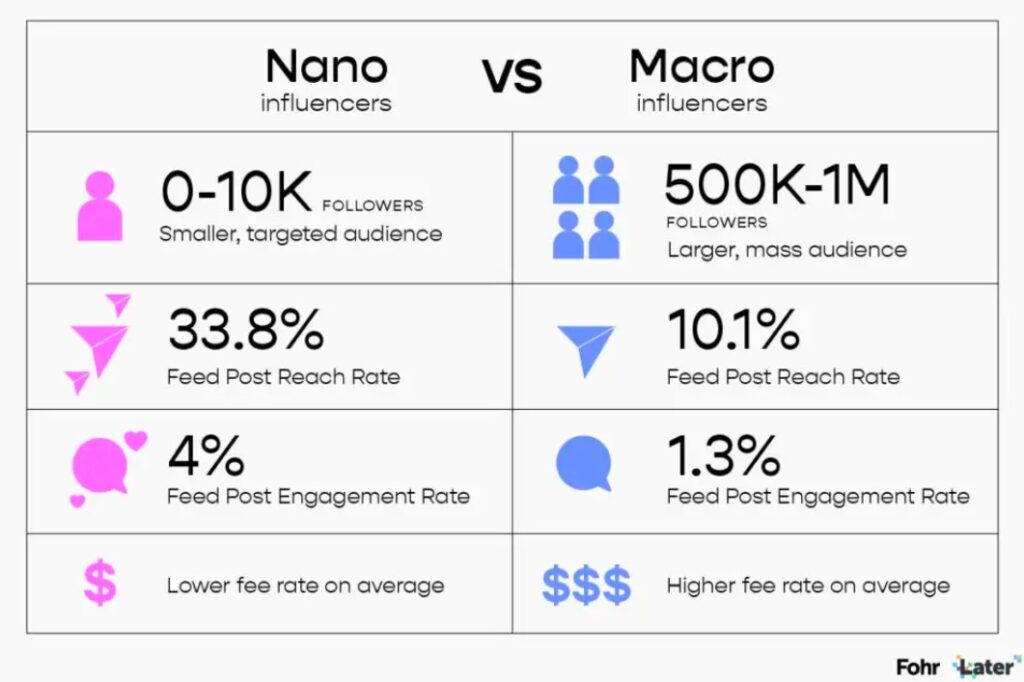
These nano influencers are hidden gems and are hard to find. Most of them aren’t actively collaborating with brands and aren’t available on influencer marketplaces. For example, a local chef, a book author, an emerging singer, or a random social media user whose post just went viral.
You can run multiple influencer marketing campaigns with different nano influencers for a monthly budget of $500. Even if you pay $100 for a single post to a nano influencer (which is way too much), you can have 5 posts per month.
The only issue is finding the right influencer who aligns with your brand and product. Price won’t be an issue.
3. Publish Guest Posts
Promoting your business and reaching your target audience gets a lot easier with guest posting. You need to write and publish high-quality content on other people’s websites and blogs.
Guest blogging has a few major benefits including:
- Brand awareness
- Thought leadership
- Networking
- Credibility and reputation
- Referral traffic
- Authority
- Author bio to talk about yourself and your brand.
Here’s an author bio that goes with a guest post:

Imagine you publish a guest post on a leading website in your niche that receives a few thousand organic visitors per day. Your post will get a lot of eyeballs. You can do this over and over again for different sites. When you write highly informative content on a specific topic (your niche) and publish it on different sites, it will significantly boost brand recall.
People will get to know you, your brand, and your products.
The idea is to reach a new audience on a new site with an informative post. You don’t have to do it for the sake of backlinks as Google doesn’t value in-post links:
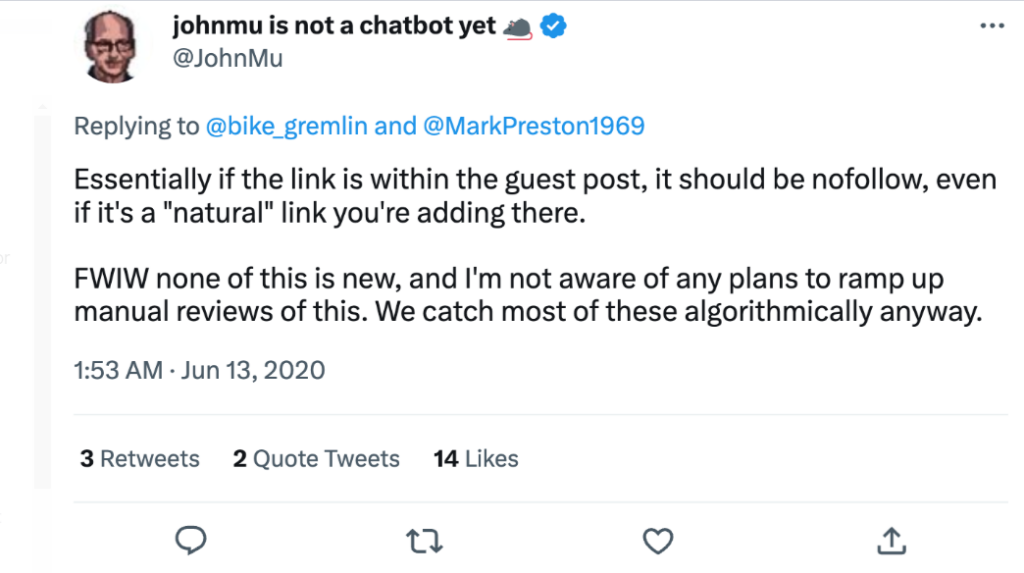
You should do guest posting for brand awareness, authority, and thought leadership. It’s a long-term marketing technique that doesn’t cost you a penny but it requires a lot of hard work such as:
- Writing epic content that site owners would agree to publish. Nobody will accept your guest post if it’s mediocre
- Finding host websites and their contact details
- Tweaking articles based on the host site’s requirements and editorial guidelines.
Make guest posting a part of your marketing strategy and continue publishing quality content across leading blogs that are somehow related to your niche. A few guest posts won’t help.
Get started with it today as it’s absolutely free to begin with.
4. Create Interactive Content
Interactive content is the future of content and content marketing. It is any content format that encourages user participation and engagement such as quizzes, contests, and calculators.
Research shows that 96% of people participate in live events every year and brands that use interactive content see an increase in views, conversions, sales, brand awareness, and recall.
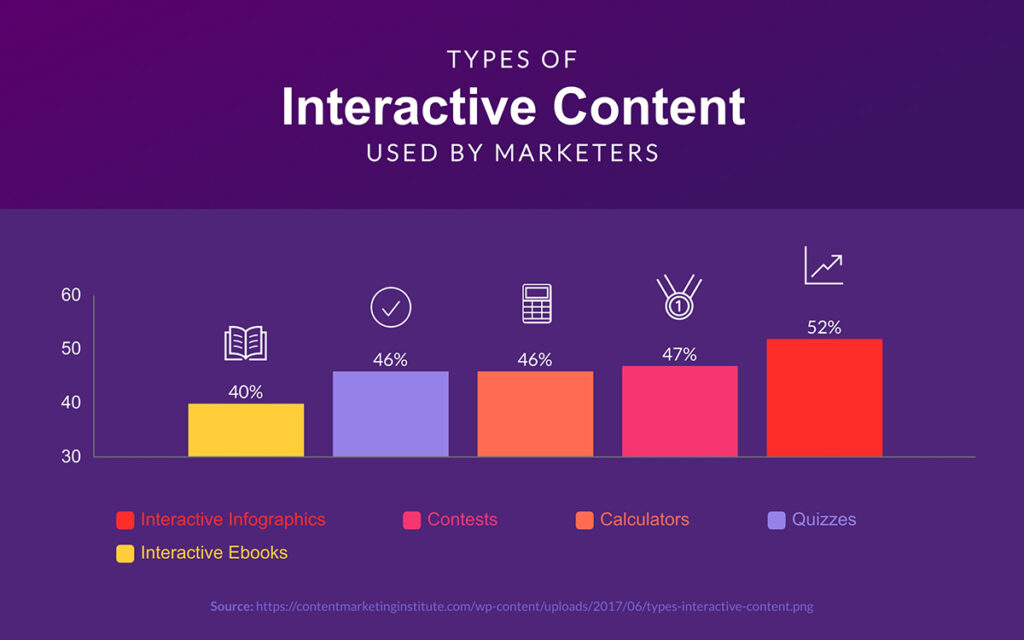
The problem with interactive content is that it isn’t as cost-effective and easy to create as some of the other content formats. While it is still low-cost, it is something you have to invest resources in.
For example, a contest or giveaway campaign on social media doesn’t cost you a lot except a free giveaway. Here’s an example of a giveaway post:

On the other hand, if you want to create an interactive infographic or a basic HTML calculator, it’ll cost you a little more as that’s where you’ll need help from relevant experts (either in-house or freelancer).
Even if it costs you a little more to create and promote interactive content, the investment is worth every penny because it’s highly rewarding in terms of engagement and conversion.
Interactive content gives you a competitive advantage because not many businesses do it (as it’s more resource-intensive). If you go for interactive content, your audience will stick with you.
Follow these best practices when using interactive content as a marketing technique:
- Make content engaging and pleasurable
- Keep the time to use your content minimal. The audience should be able to derive value quickly through your interactive content
- Focus on design and make it visually pleasing
- Keep content valuable for the end-users. Don’t just focus on interactivity, rather focus on value.
5. Run Cross-Promotion Campaigns
A cross-promotion campaign refers to a joint marketing technique where two sellers cross-promote each other’s products to their audiences. It is a type of partnership marketing where you partner and collaborate with another business and you pitch their products to your audience and they do the same.

It is traditional cross-selling, but in this case, you partner with the brand for mutual benefit. Uber and Spotify’s cross-promotion campaign is an ideal example where Uber customers were able to run their Spotify tracks through Uber car speakers.
This encouraged Uber users to use Spotify while Spotify’s existing customers were encouraged to use Uber.

You need to partner with the right brand (that’s not your competitor, obviously) with an aim to deliver value to your customers. The product you promote must be related to your product, and shouldn’t be a completely unrelated item.
The problem is finding the right businesses that are willing to partner with you.
There are a few ways to find brands for cross-promotion campaigns:
- Use a marketplace like RedCircle that connects brands for cross-promotions
- Find relevant businesses on social media (like LinkedIn) and send your proposal
- Use your network such as suppliers and agents to find other businesses. For example, your supplier can provide you with details of its customers and connect you with other businesses that fit with your brand
- Find newly funded startups and businesses online. These businesses are more likely to partner with you as they are usually interested in growth opportunities after funding.
When setting up a cross-promotion campaign, you might have to spend a few bucks on resources such as:
- Have a plan with clearly defined goals and roles
- Setup advanced conversion tracking to track performance
- Have a written agreement with the partner brand.
The actual cost varies, but it is still one of the most effective marketing techniques for small businesses that generate sales.
6. Create a Referral Program
This is a great marketing technique for all types of businesses. Starting a referral program is a low-cost strategy to get new loyal customers, reduce customer acquisition cost, and retain existing customers.
A referral program is a marketing technique to acquire new customers by rewarding your existing customers for referring your product and company to new customers.
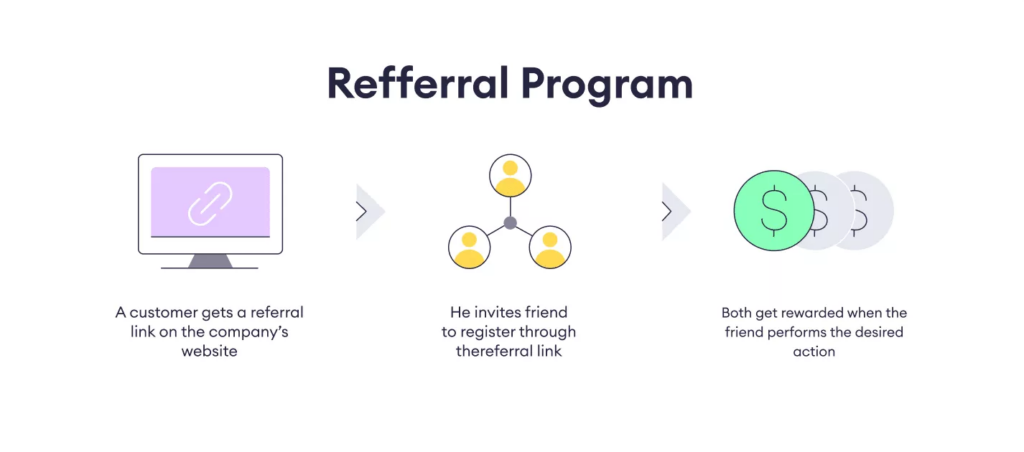
Studies have shown that referral programs generate high value leads at a low cost, referred customers spend 25% more than other customers, and referred customers are 37% more likely to make repeat purchases:

Creating a referral program doesn’t cost you a lot of money. If you have an existing customer base, you can acquire new customers instantly by launching your referral program.
You can choose between single-sided and double-sided programs based on your marketing goals. For example, if you have a limited marketing budget, you should stick with a one-sided referral program where you only have to reward the customer who brings in new customers:

You can use a dedicated referral program tool like ReferralCandy that costs you less than $100 per month for the basic plan. You can manage your program end-to-end with the platform of your choice.
There are a few things you should consider when setting up a referral program:
- Create valuable incentives. The success of the program depends on the incentives you give to the customers. If it’s not perceived as valuable, they won’t sign up for the program
- The cost of the incentive should be lower than the average CAC cost and average order value. Do your math, or else you might end up paying ruining your business model’s balance
- Set a budget for the program (preferably monthly)
- Create a dedicated page for referral program on your website. Make sure it lists all the rules and policies clearly
- Promote your referral program to existing and new customers
- Start with a double-sided referral program as it’s more attractive for both parties and is more likely to bring in new customers.
A referral program is a perfect way to capitalize on your customers. You might have to tweak your program, rewards, and features based on customer response. Constantly monitor it and don’t hesitate to A/B test it.
7. Create an Affiliate Program
Affiliate marketing is a highly effective marketing technique, but it is often ignored by businesses. You can start an affiliate program at a low cost and generate sales and leads at zero recurring cost. Your affiliates market your product while you can sit back and enjoy conversions.
An estimated 5-25% of online sales are generated from affiliate marketing by top brands and over 50% of US businesses use affiliate marketing to generate conversions for all stages of the funnel:

Creating and managing an affiliate program isn’t as easy as it sounds. Here’s how to get started with your affiliate program:
- Create an affiliate policy with clearly defined goals
- Identify products you want to sell through your affiliates
- Define your budget
- Sign up with an affiliate network such as CJ
- Engage with affiliates and grow your network.
Setting up an affiliate program costs you under $500 which is the setup fee you pay to the affiliate network. You can bypass setup fees by signing up with a small affiliate network as they don’t charge any fee.
There are a few downsides to using affiliates for generating sales:
- It gets too tedious to manage affiliates and track multiple metrics
- You’ll need to have strict control over affiliate partners with constant monitoring
- It negatively impacts brand value and reputation if not controlled properly. You have to set clear guidelines for affiliate marketers as to what they can’t do to promote your products.
Affiliate marketing is a full-fledged marketing strategy that works perfectly fine standalone. You can use it to generate sales without spending any money on marketing. All you need to do is partner with top affiliates in your niche.
8. Use Deal Platforms
Coupon marketing is a popular and effective way to reach new customers. You can use deal sites to list your products and drive massive sales.
Up to 92% of buyers usually look for discounts and coupons before buying a product online and 56% of consumers are more likely to buy from a brand that offers discounts:

The majority of the Millennials, Gen X, and Boomers plan their trips and vacations based on discounts and coupons and 77% of consumers search for deals in store circulars:
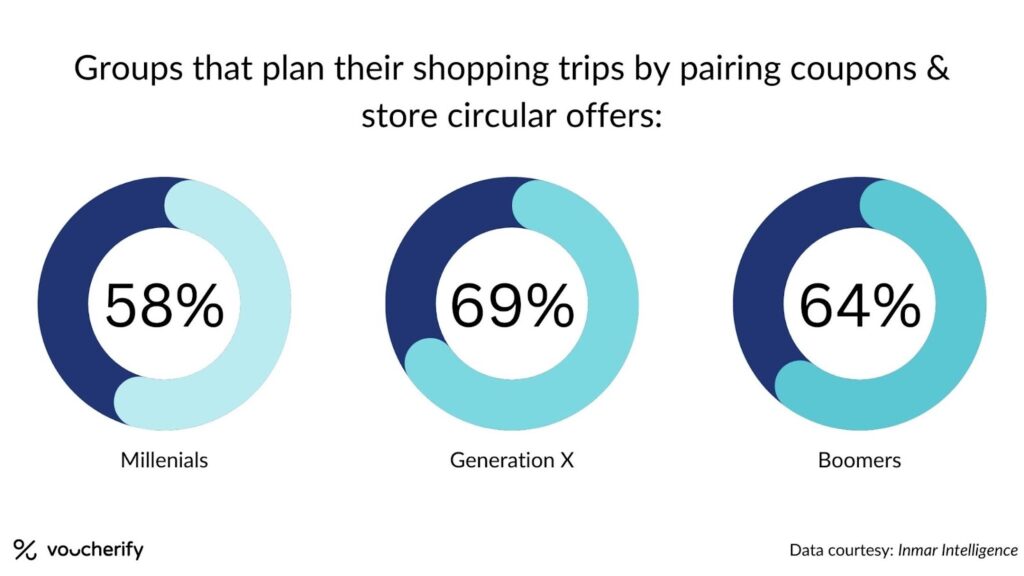
It is indeed a highly effective marketing technique that brands of all sizes can use. The ideal approach is to sign up with leading deal sites as they offer your deal instant reach. Here’s a list of the leading deal sites you can register with:
- Groupon
- Woot
- RetailMeNot
- Slickdeals
- Newegg.
You should run your coupon campaign for a short time to attract new customers. Avoid overdoing it as it negatively impacts brand image and you might see a decline in sales as your ideal customers will keep waiting for discounts and won’t purchase without it.
It is essential to maintain a balanced approach while using deal platforms for product marketing.
9. Leverage Employee Advocacy
Any business that has a team should use employee advocacy as a marketing technique. It refers to employees promoting the products and business through different channels such as social media, business network, word of mouth, etc.
People trust personal recommendations more than ads as they involve engagement at a personal level and look more human. The impact of a social post from an individual account is higher than a post from a business social account. This is what makes employee advocacy an important marketing technique:

Even if you have a single-member company, it is a good idea to use your personal contacts and social accounts to promote your business. If you have a team, encourage them to market products from their social accounts.
It requires creating a clearly defined policy, SOPs, target audience, content type, and resources for employees to ensure social posts and content aligns with your brand vision, tone, and philosophy.

Employee reward and incentive is a critical part of employee advocacy programs. The best performing employees should receive incentives – not just recognition. Consider creating a competition among employees that’ll encourage them to do better and excel in marketing.
10. Sponsor Local Events
Sponsorship is expensive and not all businesses can afford it. You can, however, choose to sponsor local events that don’t cost you a lot and work great for marketing.
Local events such as food festivals, street parties, conferences, marathons, community events, seminars, and workshops often struggle to find sponsors. Finding sponsorship is one of the two top challenges faced by 90% of B2B event organizers:
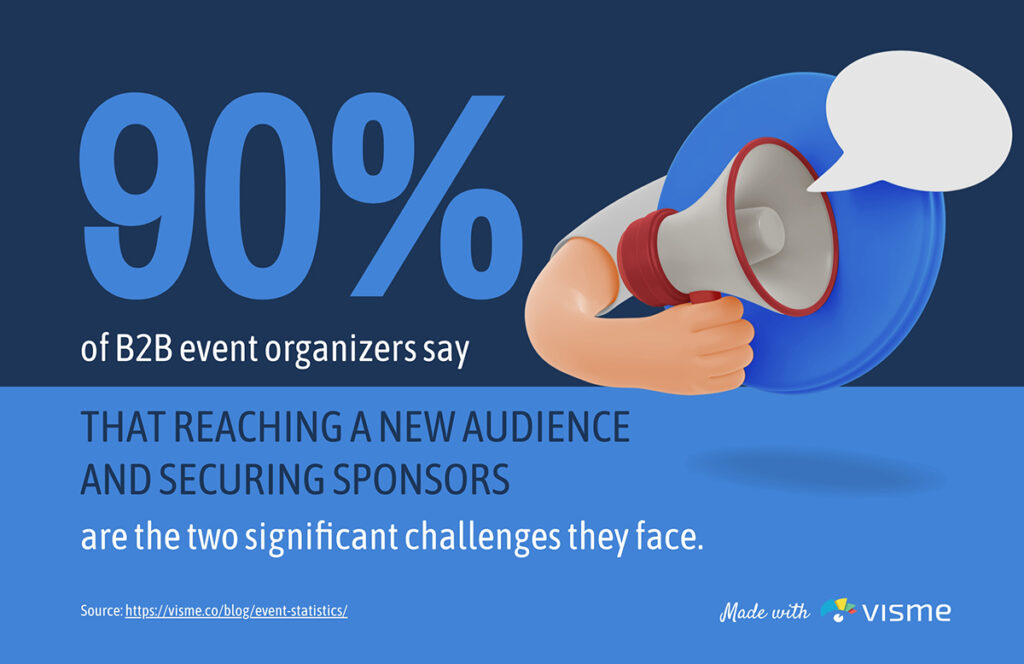
You can reach out to local event organizers and use event sites to locate relevant events. Reach out to the organizers and discuss sponsorship. You need to look for events that are most likely to be attended by your ideal customers.
Event sponsorship is ideal for brand awareness, entering a new target market, and testing a new product or feature. It won’t cost you a lot as local, niche events don’t have very strict demands and as they are struggling to find sponsors, you can get a top slot for a few hundred bucks.
Follow these guidelines when sponsoring an event for marketing purposes:
- Set clear marketing goals. Be sure of what you want to achieve with the sponsorship
- The event should be related to your brand, product, and primary audience
- Use event sites like Eventbrite to find local events in your preferred location
- Sponsor multiple local events as a single event sponsorship is least likely to move the needle.
Bonus: Leverage Tier 3 Advertising
It isn’t essentially a low-cost marketing technique as it requires a significant advertising budget per month. However, it is highly effective for businesses that are struggling with PPC ads primarily due to high CPC.
Running a PPC campaign on Google or Meta Ads as these ad networks have quite high CPCs. Winning the bid gets too costly. The big brands that have massive advertising budgets always take the lead.
You can target third-tier countries that other advertisers don’t focus on. These countries have low CPCs due to less competition. Here’s a country tiers list used in advertising:
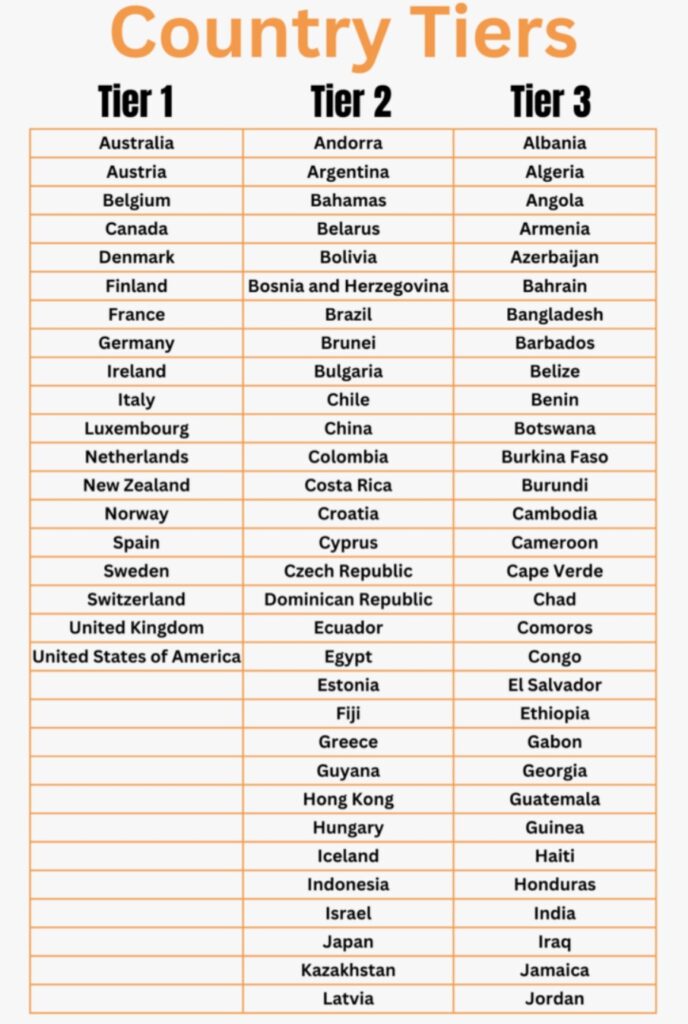
The average CPC in Bangladesh is 79% less than the average CPC in the US and while Serbia has a 95% lower CPC than the average CPC in the US for Google Ads:

Here’s the catch: It only works for global online businesses such as a SaaS company or an ecommerce store that delivers globally.
For example, you have a SaaS business which means there aren’t any geographical boundaries and restrictions (unless specified by your business). Anyone from anywhere in the world can purchase your software and use it irrespective of the location.
Slack, for instance, can be used by anyone in the world as long as the user has a valid credit or debit card.
This means you don’t have to necessarily target tier-one countries through PPC ads as it will significantly increase CAC. You can switch to second and third-tier countries which will significantly reduce CAC and you can avoid severe competition.
It requires experimentation as you have to figure out the right ad network and profitable regions.
If you have a local business, you should consider using local advertising options such as newspaper and radio ads. That’s where you’ll face minimal competition and costs will be relatively low.
Final Thoughts
Marketing is challenging because it’s relative.
What works for one business might not work for you at all. You need to test different marketing techniques and find the one that works best for your brand and audience.
Once you find the right marketing technique for your business, refine and scale it.
It’ll make survival and growth much easier.
Featured Image: Pexels


